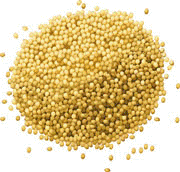International Sorghum and Millet Collaborative Research Support Program (INTSORMIL CRSP)
Date of this Version
3-1-2007
Document Type
Article
Citation
INTSORMIL Report No. 11, March 1, 2007
Abstract
Grain sorghum, an important dryland crop in the Central Great Plains of the United States, is adapted to growing in areas where low and erratic rainfall and high temperatures limit production of other crops such as maize and soybeans. The United States is the largest producer of grain sorghum with 6 million acres devoted to production of this crop in 2005. Kansas produces more grain sorghum, commonly known as milo, than any other U.S. state. Kansas growers value sorghum because it performs well in many types of soils and weather. More than 80% of the sorghum produced in Kansas is used as livestock feed with expansion into new uses such as fuel ethanol, human “health” foods, and starch-based biodegradable products like packaging materials.
Maize is a thirsty plant that requires large amounts of water. Sorghum offers farmers the ability to reduce costs of irrigation and other on-farm expenses and to grow a crop where other crops (such as maize) do not produce well. As pressure mounts to divert water from the Ogallala Aquifer to human municipalities, less water is available for irrigation. Thus, sorghum is a crop that will become even more important to crop farmers in the Great Plains and to the High Plains cattle and poultry feeding industries.
INTSORMIL is dedicated to the global improvement of sorghum and pearl millet. One INTSORMIL goal is to improve the yield potential, resistance to pests and diseases, and feeding value of grain sorghum through plant breeding and genetic improvement. In two INTSORMIL sponsored studies, Kansas State University (KSU), Texas A&M University, and USDA/ARS plant breeders, animal nutritionists and food scientists are collaborating to: 1) increase the level of resistance to sorghum grain mold and 2) increase sorghum grain yield by selecting for large seed size. An added benefit of the large seeded sorghums is their greater content of protein and fat, both of which are of great importance to livestock production.


